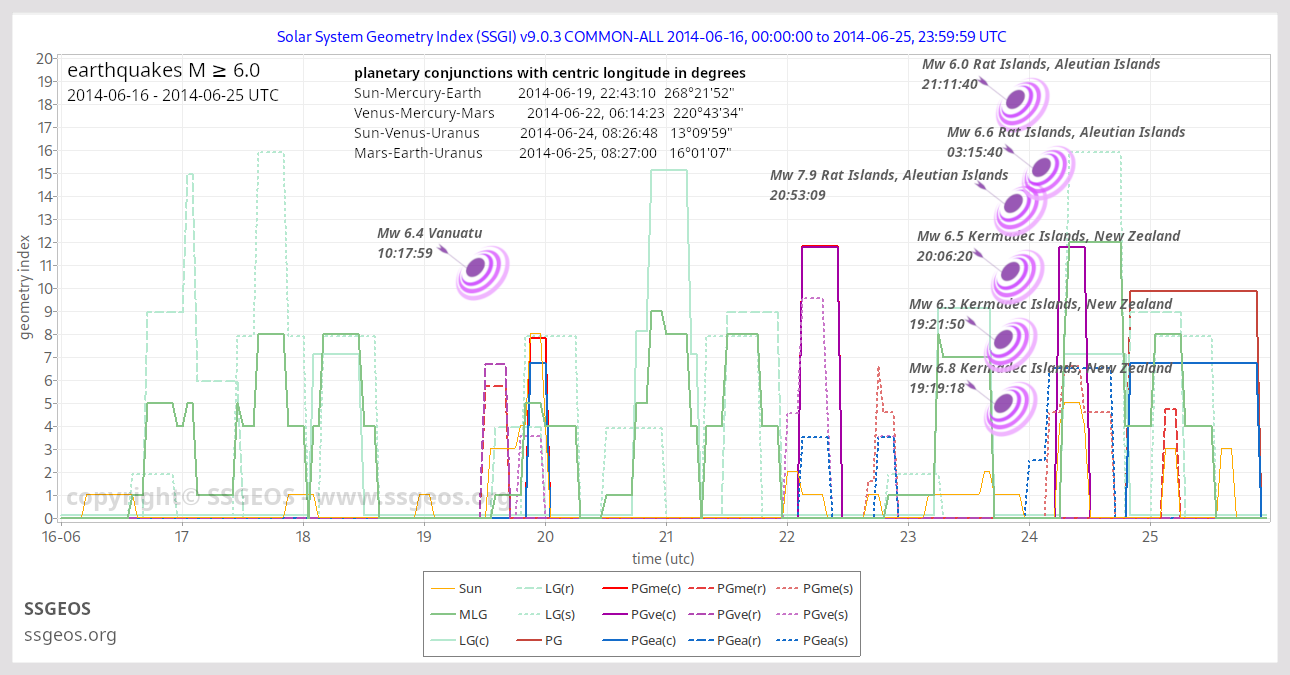About SSGEOS
SSGEOS is short for Solar System Geometry Survey, a research institute that monitors geometry between celestial bodies in the Solar System related to seismic activity. This relationship has most recently been confirmed by this independent scientific study. But comprehensive study in this field based on long time observation and research is virtually non-existent, which makes the position of the SSGEOS unique.
Why and How Research started
After its foundation in June 2022, the SSGEOS adopted the research and forecast models, including the SSGI models, from Ditrianum, an organization that had been studying planetary and lunar geometry in relationship to seismic activity since 2014. Their first clue that specific geometry in the Solar System could possibly result in larger earthquakes was found on 23 June 2014, when three magnitude ≥ 6.0 earthquakes occurred in the South Pacific, followed by three more in the North Pacific, peaking magnitude 7.9. This temporal clustering (not to be confused with spatio-temporal clustering) of strong earthquakes occurred within eight hours.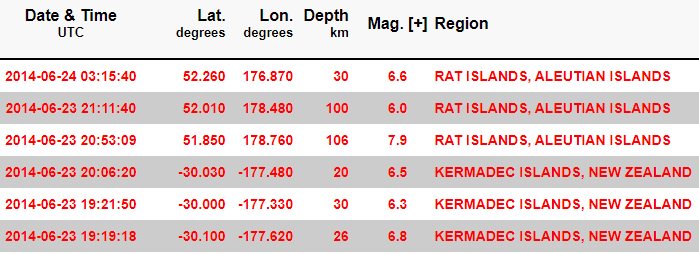
earthquakes M ≥ 6.0 23-24 June 2014
It was a sudden seismic increase in a relatively quiet month and a perfect example of clustering of larger earthquakes, a well-known but unexplained phenomenon in seismology. Using Solar System simulation software, it appears that six celestial bodies were engaged in three planetary conjunctions that converged into a near triangle from 22 to 25 June 2014.
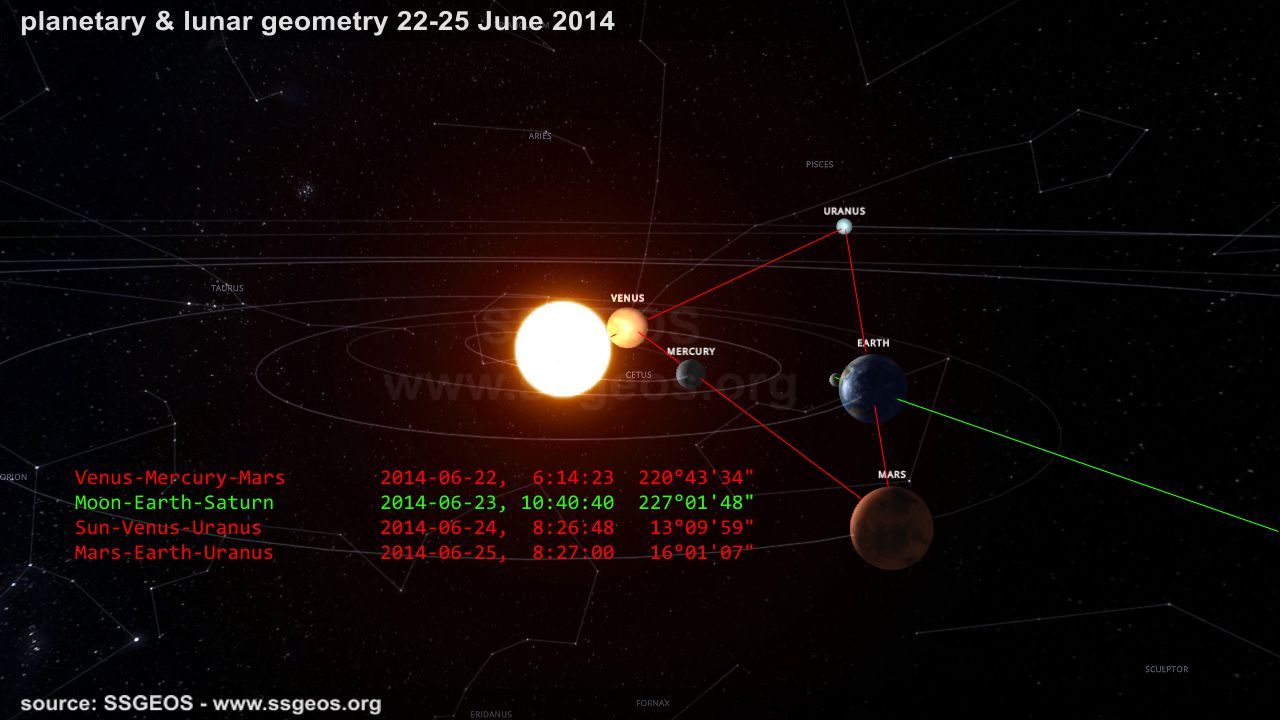
planetary & lunar geometry 22-25 June 2014
In addition to the large seismic activity, a meteo-tsunami occurred in the Mediterranean that propagated from west to east from 23 to 27 June 2014 as a result of "unusual atmospheric forcing", a scientific study later revealed (pdf-copy).
Analysis of the planetary geometry that occurred from 22 to 25 June 2014 led to a study into the geometry between celestial bodies at the time of larger earthquakes. The first seismic events that were selected are the largest earthquakes on record, which are the Valdivia earthquake on 22 May 1960 (Mw 9.5) and the Alaska earthquake on 28 March 1964 (Mw 9.2).
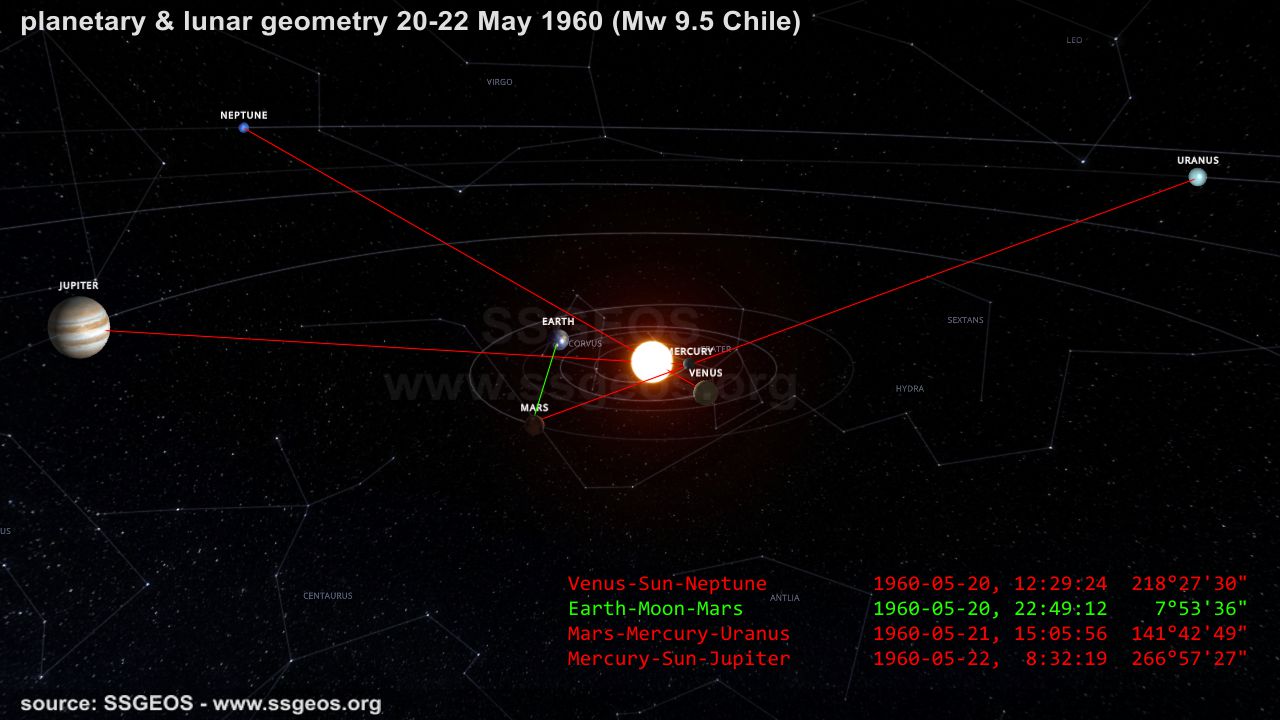
planetary & lunar geometry 20-22 May 1960
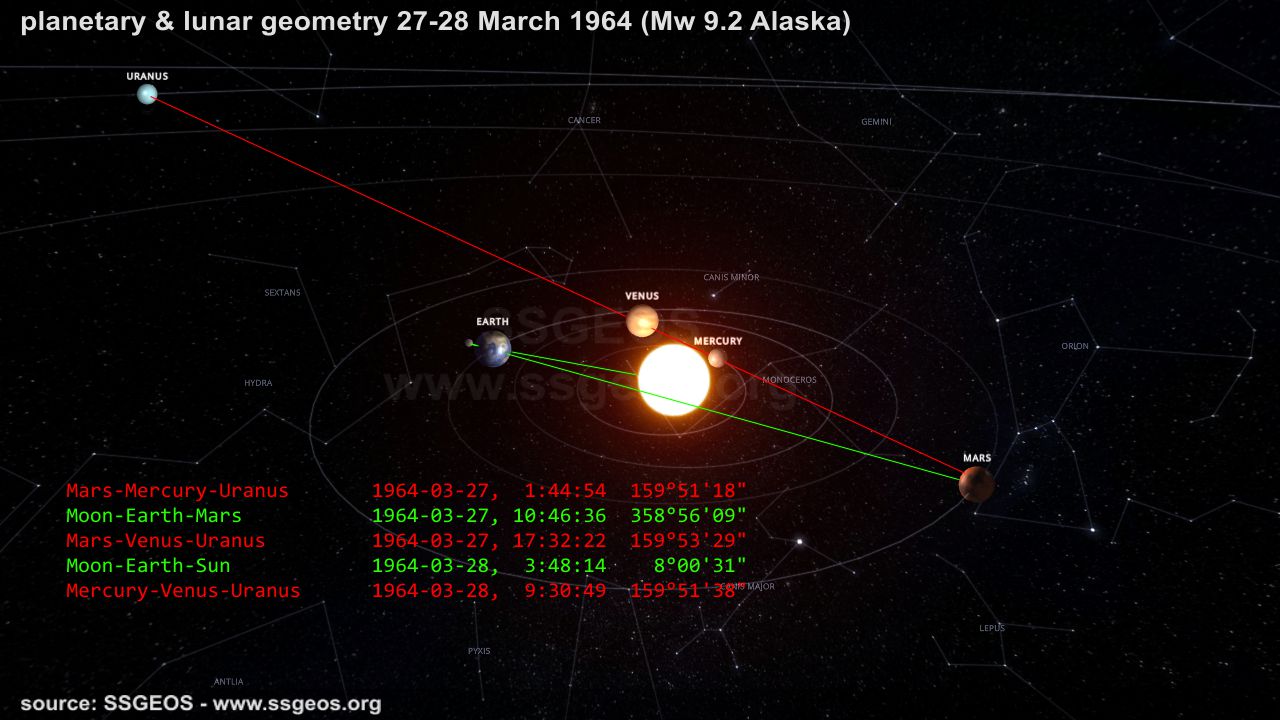
planetary & lunar geometry 27-28 March 1964
This study revealed that both great earthquakes occurred after a near convergence of three planetary conjunctions whereby Mercury, Venus, Mars and one or more outer planets were involved. Later studies revealed that the position of the Moon is equally significant.
Analysis of more recent great earthquakes (2004-2011) yielded similar results, whereby the simultaneous involvement of Mercury and Venus in a convergence of multiple planetary conjunctions appears to be key.
We emphasize simultaneous and convergence, because there is a common misconception that "planetary conjunctions occur all the time" and that "there is always a conjunction that can be linked to an earthquake." The key is not any conjunction, but a tight convergence of multiple conjunctions involving specific celestial bodies.
In all cases presented here, there was a convergence of three planetary conjunctions that included Mercury and Venus with one or more outer planets and/or the Sun, next to one or more lunar conjunctions, also with an outer planet or the Sun.
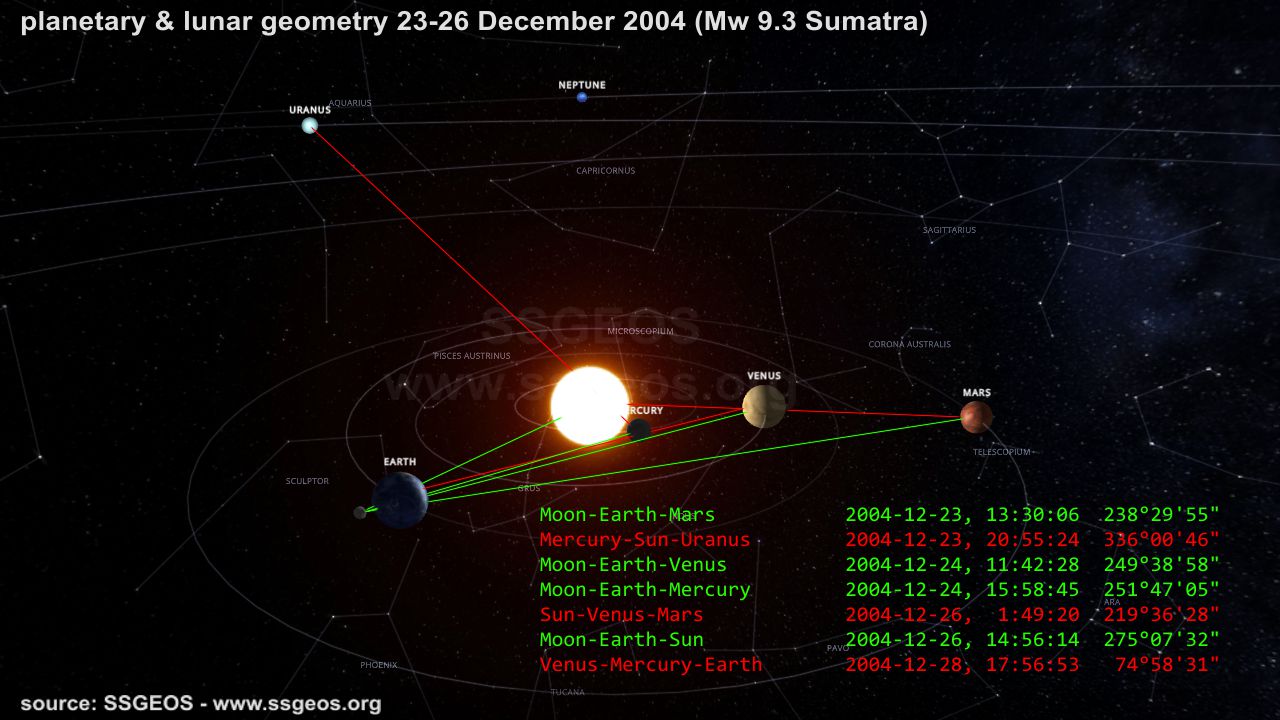
planetary & lunar geometry 23-26 December 2004

planetary & lunar geometry 27 February 2010
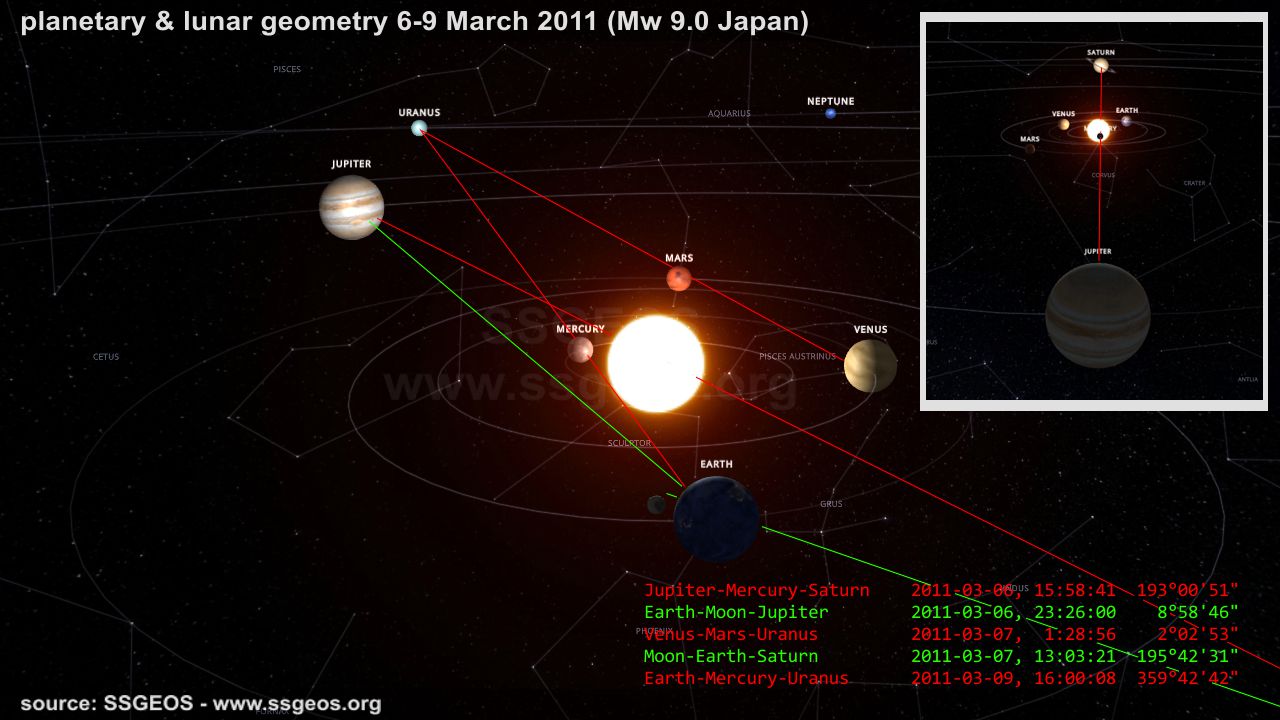
planetary & lunar geometry 6-9 March 2011
Forecasts
After nine months of research, from June 2014 to April 2015, Ditrianum's first experimental forecast was posted on Facebook with a warning that 22-27 April could be critical. On 25 April a magnitude 7.8 earthquake occurred in Nepal. The next forecast focused on 28-29 May 2015 and a potential seismic event of up to magnitude 9. On 29 May a magnitude 6.8 earthquake occurred in Alaska, followed a day later by a magnitude 7.8 earthquake at the Bonin Islands, Japan, with initial estimates of magnitude 8.5.
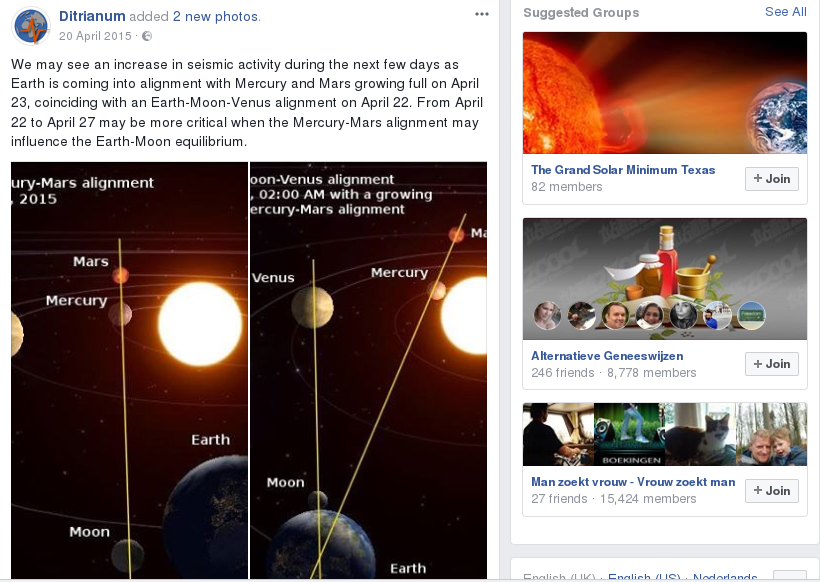
first experimental forecast on 20 April 2015 on Facebook
Today, the SSGEOS uses dedicated software to compute and map specific geometry between the planets, the Moon and the Sun. This geometry is visualized with different SSGI models. The software is used for both earthquake forecasts and reports.
